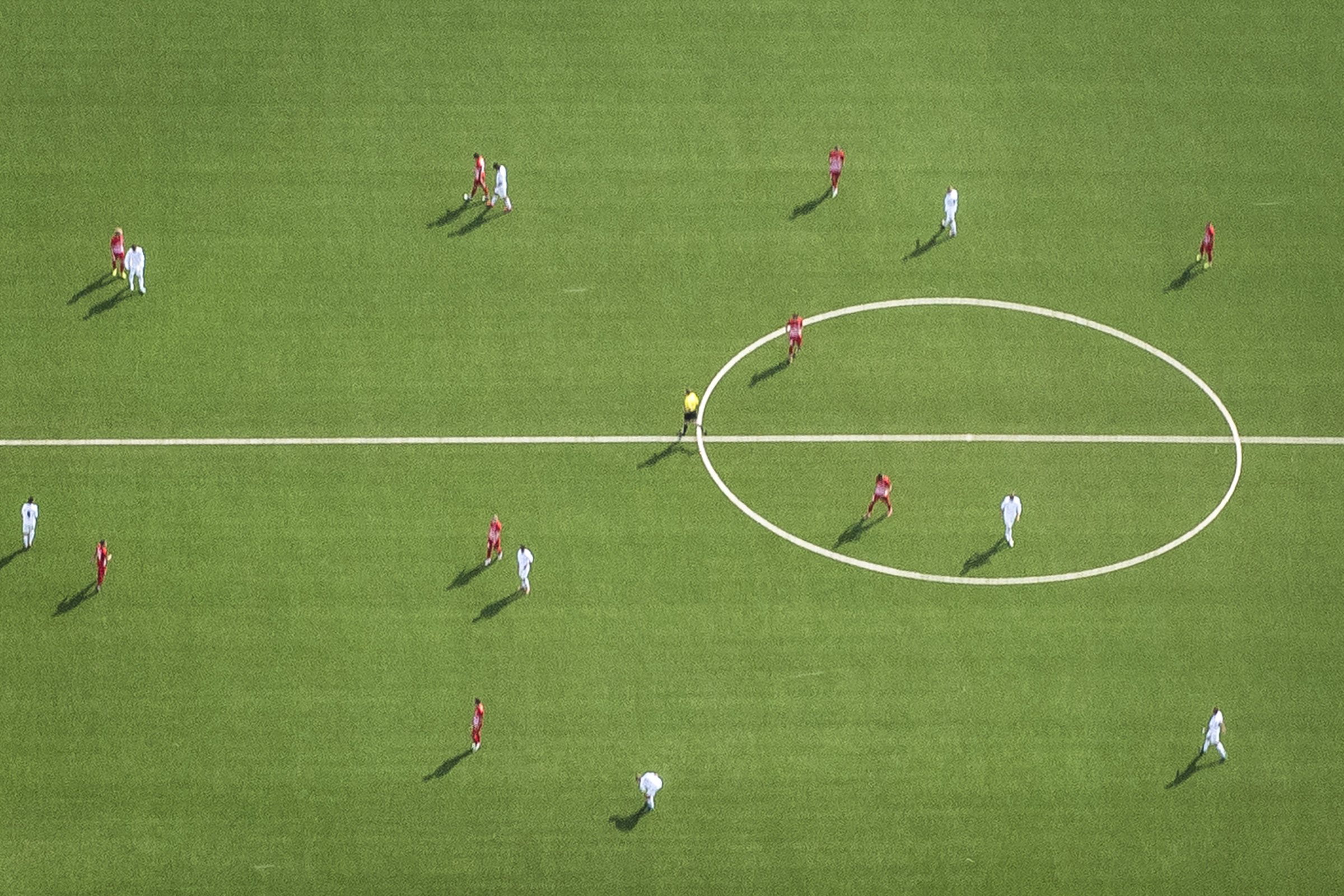Part of a series of posts for Brain Awareness Week, March 12-16.
Playing a team sport like soccer requires balance, coordination, judgement of depth, and speed. You might think we can do all these things thanks to our brains. But it turns out that to move in a coordinated group, you don’t need a brain. In fact, sometimes things that aren’t even alive can do it.
UConn psychologist and director of the Center for the Ecological Study of Perception and Action James Dixon and Maurici López-Felip, a graduate student in his lab who formerly played on the Catalan National Team, are researching why humans move as they do in crowds, on the street, and especially on the soccer field. To do this, they’ve teamed up with UConn chemist Jim Rusling and Dilip Kondepudi, a physicist at Wake Forest University, as well as soccer gurus from FC Barcelona. The first behavior they’re looking at is flocking.
Birds flock. Little kids chasing a soccer ball flock, too. Inanimate objects can also flock. For example, little bits of benzoquinone floating on the surface of a pool of water tend to flock, even when they start out randomly strewn across the surface. See video. The bits gradually dissolve in the water, and it’s this dissolving action that makes them move around. Inevitably, they end up flocking together. Dixon and the other researchers have shown that when the dissolving particles flock, they dissipate energy more efficiently. Since natural systems tend to move toward lower-energy states – think of rocks rolling downhill – if flocking helps particles spend energy faster, it’s the natural thing to do.
What does this have to do with brains? Humans and other living beings are essentially energy dissipation systems that sustain themselves through generations. If flocking is a natural behavior, something that dissipative systems just do, maybe it’s something our brain doesn’t have to think about. There’s probably other behaviors that come equally naturally to us, cued either by the environment or other people. Dixon and López-Felipe are currently analyzing data from FC Barcelona’s soccer players to develop a model of collective movement that includes flocking and potentially other behaviors. The team is interested in learning how they could potentially help their players move better and faster – you might even say instinctually – and win more.
“Brains are a good thing, we like having them,” Dixon says. “But it seems like a good idea to put as little burden on our computational systems as possible.” Evolution doesn’t want us to strain our brain. And neither do soccer coaches.
Dixon’s research is supported by grants from the Connecticut Institute for the Brain and Cognitive Sciences, as well as the National Science Foundation’s INSPIRE program (#1344275).
Read more about UConn research on the brain in the series Brainstorm.



